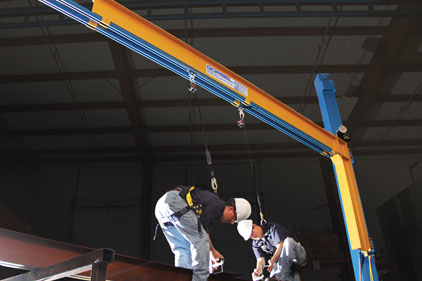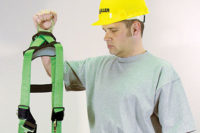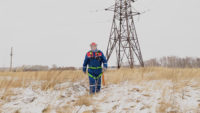1 Determine your fall protection goals
A common and logical goal for a fall prevention initiative is to eliminate or reduce the number of falls in a given facility over a specific timeframe. Once you document what you are setting out to accomplish, you can start identifying what you need to achieve your goals.
There is a wealth of information available to help companies zero in on their fall protection needs and goals, including resources from organizations like OSHA, which requires that fall protection be provided at 4 feet in general industry, 5 feet in shipyards, 6 feet in the construction industry, 8 feet in longshoring operations, or any height when working over dangerous equipment and machinery.
2 Choose a fall protection system
Once a company determines the need for fall protection, there are four options to remedy the situation: eliminate, prevent, restrain and arrest.
If a work process can be easily changed to avoid a fall risk, the preferable solution is to eliminate the risk by changing the work process.
When the risk cannot be eliminated, companies should look to prevent the risk with equipment such as guard walls, gates or fencing.
If such systems are already in place, companies should challenge their processes to try to find potential risks. Challenging the process often helps organizations determine that, while they have prevention tactics in place, a safer and more reliable option, like a restraint or arrest system, may be appropriate.
Restraint systems keep workers from reaching an area where the fall hazard exists, or enable workers to perform their duties from the height required while attached to the system. You can restrain a worker by fitting them with a harness. A fixed-length lanyard is then attached to the harness and then to an anchorage system. Restraint is generally the preferred fall protection system when the environment allows for it, because a fall is completely avoided.
Fall arrest systems stop the fall in a controlled manner using either wire rope or rigid rail. Wire rope systems require additional fall clearance due to the initial sag of the wire. The stretch of the line during a fall adds to this distance. Rigid-rail fall arrest systems eliminate any sag, stopping the fall in a shorter distance.
Rigid-rail fall arrest systems provide uninterrupted protection for additional workers on the same system. Also, in the event of one worker’s fall, the rigid-rail system will not bend or deflect. This eliminates the risk to another worker, thereby allowing other workers on the system to continue moving freely and safely, possibly enabling them to assist in the rescue of the fallen worker.
3 Integrate fall protection into the workplace
Companies at this stage have chosen to install a system in their workplace. Before introducing the fall protection system, write a detailed and site-specific plan on how the system will be used to maintain productivity while protecting employees. The plan should identify the fall prevention and protection measures that will be employed, a rescue plan in case something fails, and who is responsible for overall supervision and training. The plan should also include an overview of training objectives.
All workers must be trained prior to using any fall protection systems. Training should enable workers to identify potential fall hazards as they arise, determine which products to use in specific work environments, demonstrate proper anchoring procedures, how to inspect and maintain fall protection equipment, and demonstrate procedures and the proper wearing of fall protection equipment. Also, develop and practice a rescue plan to ensure safety should a fall occur.
The final step in the process is ongoing inspections. OSHA and ANSI require an inspection of the entire fall protection system before each use and after every fall event. A competent person, defined by OSHA as someone who is “capable of identifying existing and predictable hazards in the surroundings or working conditions which are unsanitary, hazardous, or dangerous to employees, and who has authorization to take prompt corrective measures to eliminate them,” must verify the required maintenance procedures have been properly followed. Any extreme conditions that may have occurred since the last maintenance procedure, including a fall event, should be reported to the proper supervisor and an evaluation made to determine if the maintenance schedule requires modification.
No system is foolproof. But, with the right education, training, awareness and equipment, the workplace can be a safer environment for everyone.






